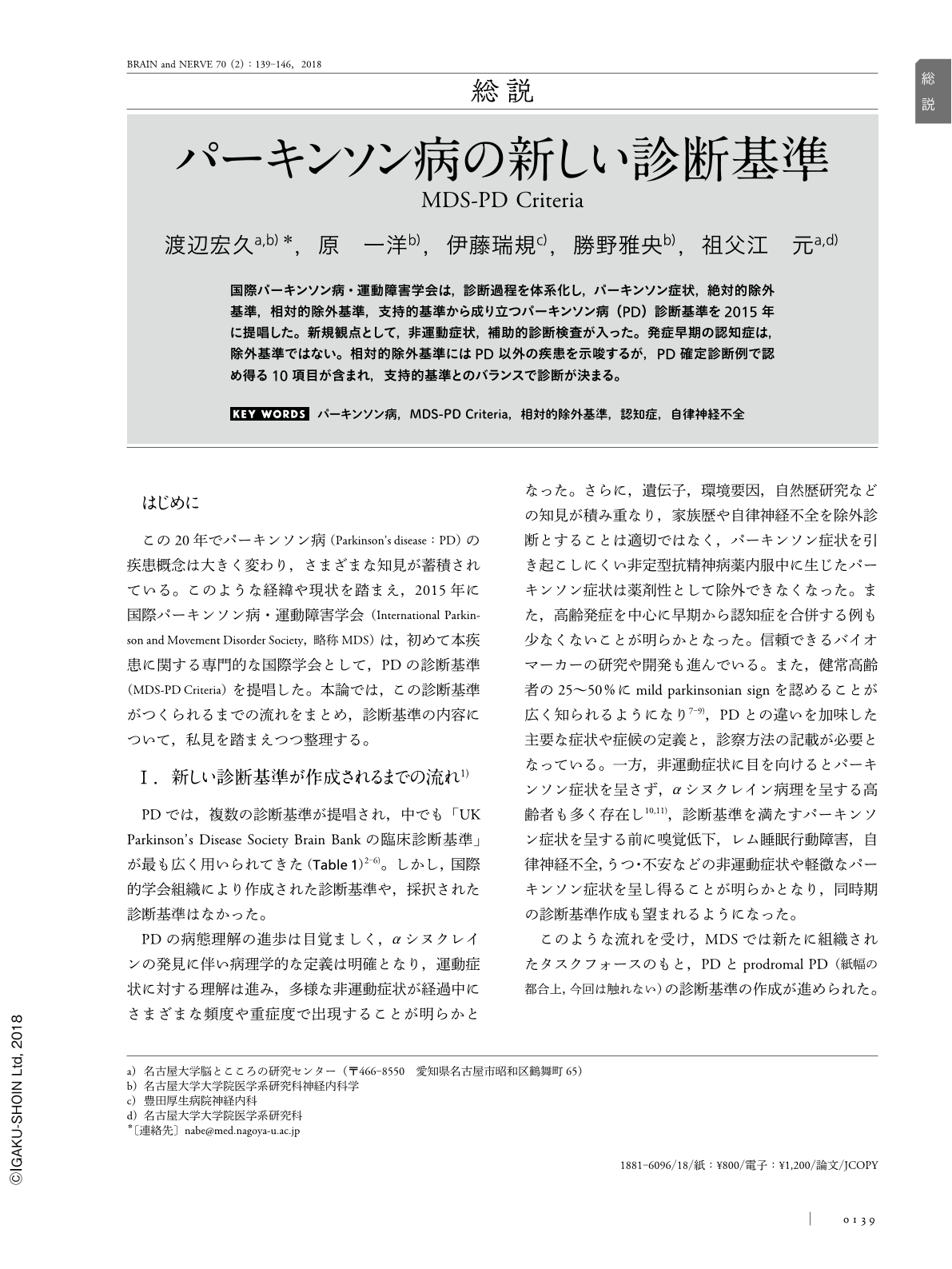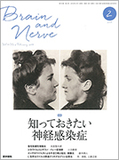Japanese
English
- 有料閲覧
- Abstract 文献概要
- 1ページ目 Look Inside
- 参考文献 Reference
国際パーキンソン病・運動障害学会は,診断過程を体系化し,パーキンソン症状,絶対的除外基準,相対的除外基準,支持的基準から成り立つパーキンソン病(PD)診断基準を2015年に提唱した。新規観点として,非運動症状,補助的診断検査が入った。発症早期の認知症は,除外基準ではない。相対的除外基準にはPD以外の疾患を示唆するが,PD確定診断例で認め得る10項目が含まれ,支持的基準とのバランスで診断が決まる。
Abstract
The International Parkinson and Movement Disorder Society offered standard diagnostic criteria for Parkinson's disease (PD) in 2015. These diagnostic criteria provided systematization of the diagnostic process and detailed explanations of parkinsonism, absolute exclusion criteria, red flags, and supportive criteria. The presence of parkinsonism was a core feature of the criteria. Clear instructions for defining the motor features were described. With regard to the novel aspects, non-motor manifestations (hyposmia, autonomic dysfunction, psychiatric dysfunction, and sleep dysfunction) and ancillary diagnostic tests (olfactory test, cardiac MIBG scintigraphy, and presynaptic dopaminergic imaging) were incorporated. Absolute exclusion criteria comprised 9 features that have the potential to exclude PD with greater than 97% sensitivity. The presence of dementia during the early stage of the illness was not classified as an exclusion criterion. The 10 red flags that indicate another cause of parkinsonism but can also be observed in pathologically proven PD were listed. Red flags were counterbalanced by supportive criteria to allow diagnosis of PD. These 4 supportive criteria were highly specific for a diagnosis of PD. With regard to the level of certainty, clinically established PD and clinically probable PD were described. In this review, we summarize the main points of the MDS-PD criteria and discuss the utility and limitations.

Copyright © 2018, Igaku-Shoin Ltd. All rights reserved.


